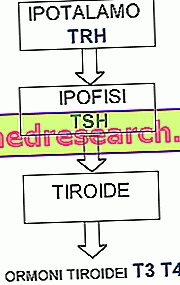Generality
Diabetic coma is one of the most serious complications of diabetes, which, if not properly treated, can even be fatal.

Types of Diabetic Coma
Often, the term "diabetic coma" is used in a generic way to indicate different types of complications typical of diabetic disease, characterized by a protracted loss of consciousness of the patient.
More specifically, it is often stated that diabetic coma is a complication of diabetes that can be caused by hypoglycemia, hyperglycemic-hyperosmolar non ketosic syndrome or diabetic ketoacidosis.
However, this general use of the word "diabetic coma" is not entirely accurate. In fact, it would be more correct to speak, respectively, of:
- Hypoglycemic coma, due to hypoglycemia and also called "insulin shock" or "insulin reaction".
- Non-ketosic hyperglycemic-hyperosmolar coma, identifiable with hyperglycemic-hyperosmolar syndrome, a complication of type II diabetes that usually arises following a period of symptomatic hyperglycemia.
- Ketoacidosic coma or diabetic coma that can occur in case of diabetic ketoacidosis not adequately treated and / or diagnosed.
In this article, therefore, we will only deal with diabetic coma intended as a consequence of diabetic ketoacidosis.
Causes
In light of what has just been said, diabetic coma manifests itself in the case of diabetic ketoacidosis, of which it represents evolution. Not surprisingly, some authors use the word "diabetic coma" as a synonym for "diabetic ketoacidosis".
Diabetic ketoacidosis is itself a complication of diabetes (especially type I diabetes mellitus, although, in some cases it may also occur in patients with type II diabetes) caused by an absolute deficiency of insulin.
Due to the lack of insulin, glucose - although present in the body and in the bloodstream - cannot enter cells; consequently, it cannot be used.
The cells, therefore, try to make up for this lack by exploiting the fatty acids, from whose metabolism they extract the energy they need.
However, the metabolism of fatty acids in the absence of adequate amounts of glucose in the cell leads to the synthesis of the so-called ketone bodies .
Moreover, at the same time - given the lack of intracellular sugar - the body paradoxically produces hormones that stimulate the secretion of glucose into the circulation; this does nothing but worsen the hyperglycemia already present in the patient, since, given the lack of insulin, the newly synthesized glucose still fails to reach the intracellular level.
All these phenomena therefore lead to the onset of ketoacidosis, hence of diabetic coma.
Symptoms
The diabetic coma does not appear in a sudden way, but its onset is preceded by a particular symptomatology and its onset is slow and progressive.
The symptoms that precede the onset of this complication substantially consist of:
- Nausea and vomit;
- Abdominal pain;
- Intense thirst;
- Polyuria and pollakiuria;
- Blurred vision;
- Disorientation;
- Mental confusion;
- Fatigue, drowsiness and lethargy that can then evolve to a coma.
In association with these symptoms, the patient will present hyperglycemia, glycosuria, ketonemia, ketonuria, cardiac arrhythmias and deep and panting breathing.
Briefly summarizing, it can be stated that the loss of consciousness in diabetic coma is associated with a strong global dehydration of the patient (in particular, the eyes appear hollow and the mucous membranes dry), ketotic breath (due to the increase in the production of ketone bodies from part of the body), elevated blood sugar, electrolyte abnormalities and reduction in blood pH.
Treatment
As mentioned, diabetic coma is a complication of diabetes which can also be fatal. For this reason, as soon as the characteristic symptoms of diabetic ketoacidosis appear, it is essential to contact the doctor and go to the hospital.
It is therefore clear that the prevention and timeliness of the diagnosis constitute the best treatment available for this serious complication.
However, the treatment of diabetic coma must absolutely take place in a hospital setting and under the strict control of the doctor:
- First of all, it is essential to rehydrate the patient through intravenous fluid administration.
If dehydration is very serious, usually, a rapid intravenous infusion of saline is performed. If, on the other hand, dehydration is less severe, the amount of liquid to be administered will be established by the doctor on a case by case basis.
Obviously, the doctor will also proceed with the treatment of any electrolyte imbalances.
- Subsequently, or simultaneously with the rehydration process (depending on the doctor's decision), the patient must also be given an appropriate dose of insulin (always established by the doctor on a case-by-case basis), in order to restore normal levels of glycaemia and in order to stop the synthesis of ketone bodies by the body.
Of course, blood glucose levels will have to be regularly monitored, so as to evaluate the patient's response to therapy in order, consequently, to adjust the dosage of insulin to be administered to the patient, until the desired effect is achieved.



